According to Meituan-Dianping, as of 2016, there were over 320,000 hotpot restaurants in China, a number way exceeding any other regional and Western cuisines. To date, hotpot restaurants account for 22% of all the transactions on Dianping.
Last Monday, on our way out of a dreadful two-hour business meeting, Yan and I were dying for lunch.
“What shall we eat?”
“Hotpot pleaseee!”
“What hotpot?”
Without thinking, I opened Dianping and typed "hotpot" in the search bar. Browsing through the long list of options, we spotted Chaoshan beef hotpot, a novel hotpot style that emphasizes on bringing the original flavor of freshly slaughtered beef. “Let’s have this!” I could feel my saliva gland activating just thinking about the hot mellow broth and rich meat.

Classic Chaoshan beef hotpot: clear broth, thinly-cut, fresh beef.
“Have you ever counted how many times we’ve had hotpot this winter?” On our way to the restaurant, Yan asked.
We did a quiet recap of our recent dining journey and were shocked by the conclusion: for the past month or so, we’ve been having at least two hotpot meals per week!
“Damn it, that’s A LOT OF hotpot we've had!”
Down the Memory Lane
Our love for hotpot is nothing new. As two girls grew up in Beijing, both Yan and I could recall many childhood memories going to Beijing’s Mongolian hotpot restaurants, sitting around a giant copper hotpot for the classic lamb + sesame sauce combo. After we entered middle-school, Szechuan cuisines and in particular Chongqing hotpot became a major hit around the country; the burning-red, cow-fat infused spicy broth fired up the many joyful meals we enjoyed with friends and families.
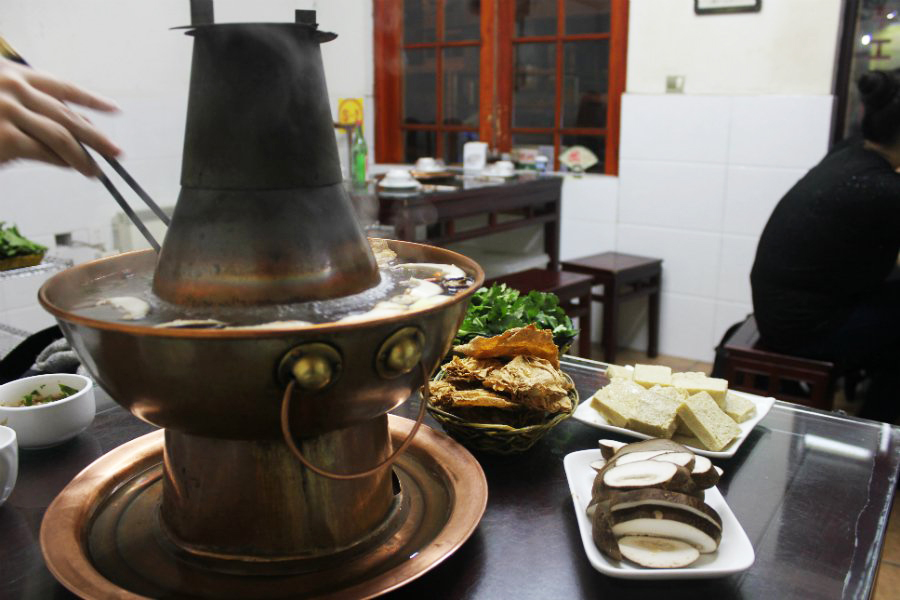
The traditional "copper pot+lamb" hotpot that Beijingers have enjoyed.
And then there were our Chinatown hotpot days. For the three years when Yan and I both studied in universities in London, going to Chinatown for hotpot became a sacred monthly ritual between our group of Chinese friends. For the few restaurants that actually served hotpot back then in London’s Chinatown, the food was crude to say the most; the vegetables and tofu often look stale, and the lambs were often hard as bricks with large chunks of ice covering on top. Want to complain? All you would get is a death stare from the Cantonese restaurant owner, “not happy? Then don’t eat!”
But even that was ok. For oversea students like us, being able to have hotpot together was the best thing we’d ask for in a city so far away from home. Once the broth started simmering and everyone began to throw things into the pot with their chopsticks, the table instantly turns to a la la land beamed with laughter and happiness. Who cares if the frozen lamb tastes so dry? With the magic of that flavorful dipping sauce, everything in the hotpot is transformed into an ingredient for happy memories.

In China, Hotpot is the food that the most associated with friendships and unions. (photo from: popular drama series Ode to Joy)
Yan and I are not food historians or experts, yet reminiscing over our own food journey, we could clearly see why hotpot is so loved by the entire Chinese population (honestly, I’ve never met anyone in China that doesn’t like hotpot): it is delicious, the interactive, customization element is fun (and healthy-ish, if you choose the right soup base, right sauce and right ingredients), and most importantly, the way hotpot is consumed reflects the essence of Chinese culture: a combination of order and diversity balancing each other out at the same time to achieve maximum harmony on the dinning table. To complete a successful, collective hotpot dining experience one ought to follow many rules, from what ingredients goes into the soup first, how long certain ingredients cook (for instance, goose intestines must be cooked by the “7-up-8-down” rule, meaning 7 times out of the soup and 8 times in) to what sauce to dip the food with. At the same time, everyone has the freedom to eat whatever they want and share anytime (think specifically the beauty of yuān yang pot 鸳鸯锅, aka those yin-and-yang style hotpot that allows one to do spicy at one side and clear broth at the other) – seriously, how more inclusive, considerate and comforting could a meal be?
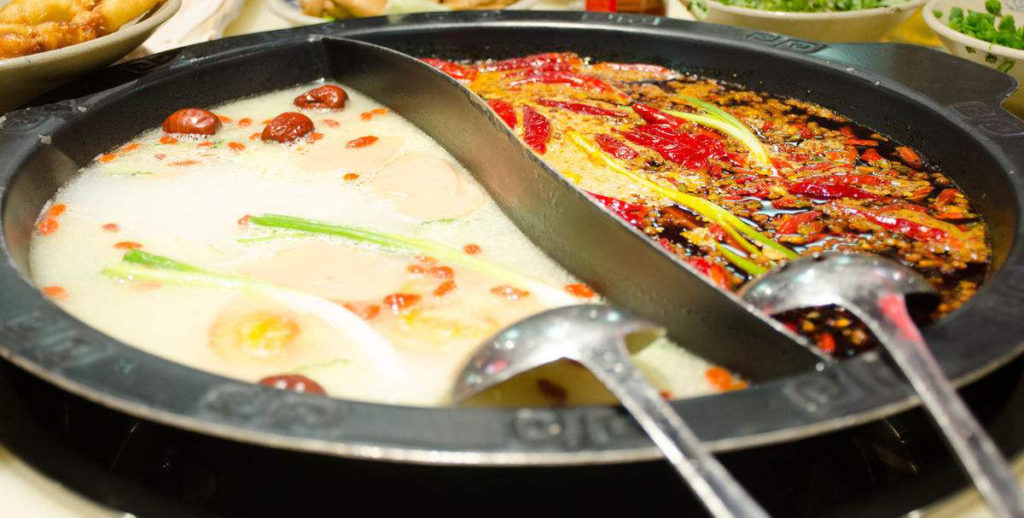
Whoever invented yuān yang pot 鸳鸯锅 is a GENIUS.
Hotpot History 101
Online sources often trace the origin of hotpot back to about 2,000 years ago, when Mongolian horsemen rode into northern China and brought over their open-fire, broth-and meat cooking tradition to the Han population. In time, regional variations developed with different ingredients and embellishments; it eventually became popular throughout most of mainland China by the Qing Dynasty (1644 to 1912).
But to attribute the invention of hotpot solely to the Mongolians might not be fair. As some Chinese archeologist have found, more than 4000 years ago during the Neolithic age there were already pottery tripod being used to for cooking hotpot. During the Shang Dynasty (1600-1046 BCE), hotpot cookers became even more refined and more similar to our modern ones - only that they were still designed for single-person use at the time.
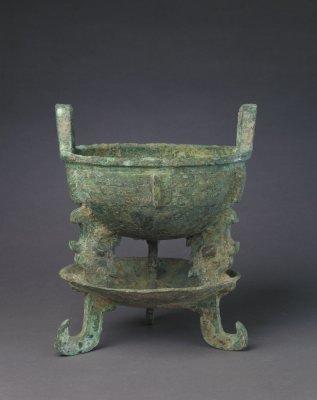
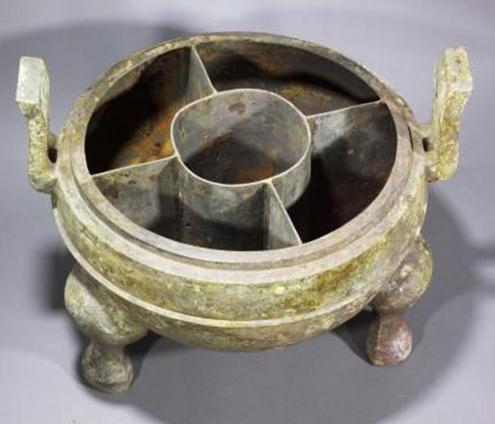
Hotpot cookers from the Shang and Han dynasty.
From Hotpot to Hotpots
“So we’ve been having hotpot ever since we were kids,” putting tofu and potatoes into the newly-boiled broth, I began to actually think about hotpot seriously first time in life, “but have we always been having it with this kind of frequency?”
“Well, hotpot in winter has always been a thing for me,” Yan took a bite of the tofu, “but what made my hotpot experience unique this year is the diversity. Think about it, how many different styles of hotpot we’ve had just in Beijing alone?”
“Let’s see. Last week we had Yunnan mushroom hotpot and Guangdong seafood hotpot, the week before was Hainan coconut-chicken hotpot and spicy Chongqing hotpot - didn’t we have Guangdong pig-stomach & chicken hotpot (猪肚鸡) too? ”
Here’s an often underrated fact: in most Chinese cities nowadays, hotpot is not just a type of food, but an entire food category filled with endless regional variations and specialties. Waves and waves of hotpot restaurants come and go; varying in price and flavor, they've become a vital sign of consumption upgrade in China on the dining front.
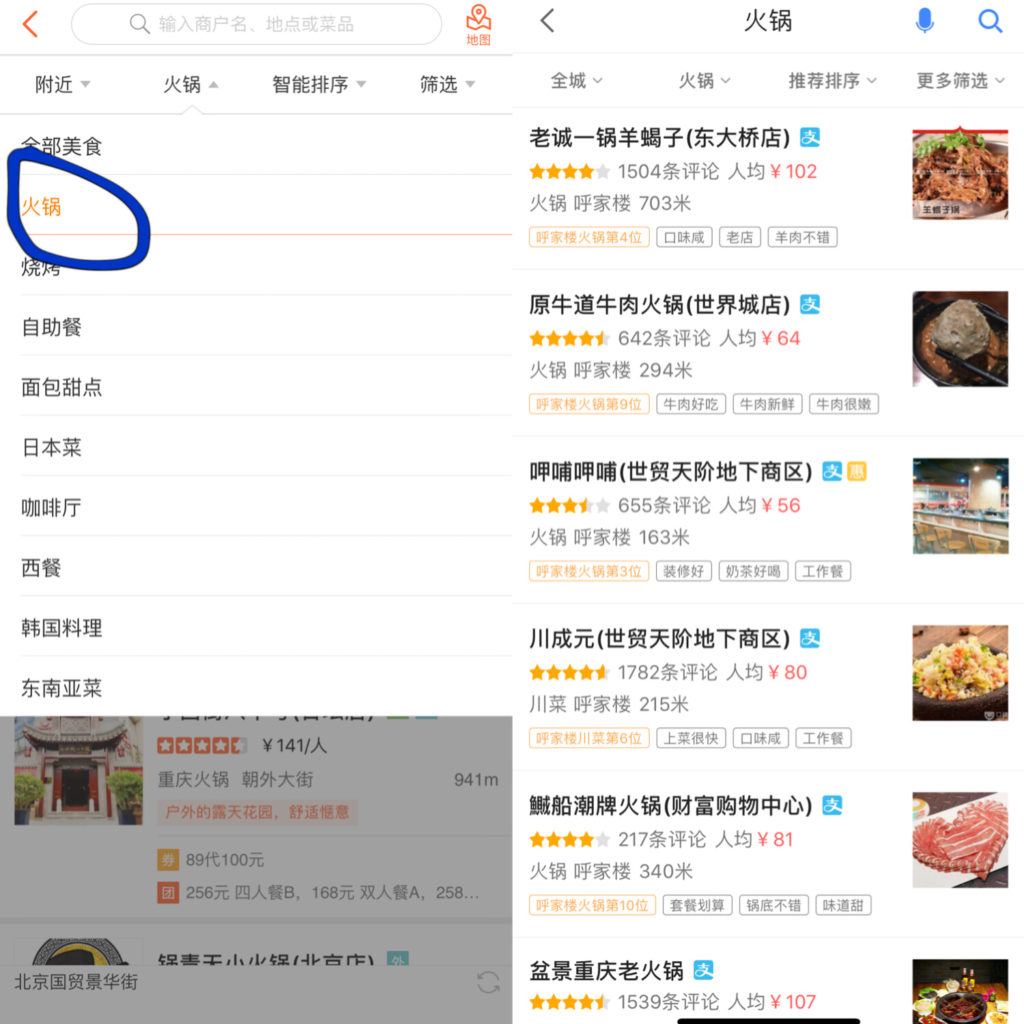
Hotpot along is now a huge food category listed on Dianping.
Five years ago, to eat hotpot in Beijing was still largely a decision between spicy or mild, Szechuan or Mongolian; today, although the old Beijingers might still prefer sticking to their traditional lamb-and-sesame paste Mongolian hotpot, urban migrants and middle class consumers have the power to constantly try out new trends (Chaoshan beef hotpot being the biggest hotpot trend since 2016), new dining styles (instant hotpot 方便火锅 for example, which we sincerely do not recommend...) and more excitingly, a diverse range of hotpots introduced from other parts of the country. For restaurants owners, hotpot makes a happy story too: with a quick and low-cost production process (hotpot restaurants don’t even need chiefs! Think about it!), restaurants are able to achieve a profit margin as high as 44% - much higher than any other type of Chinese cuisines on the market.
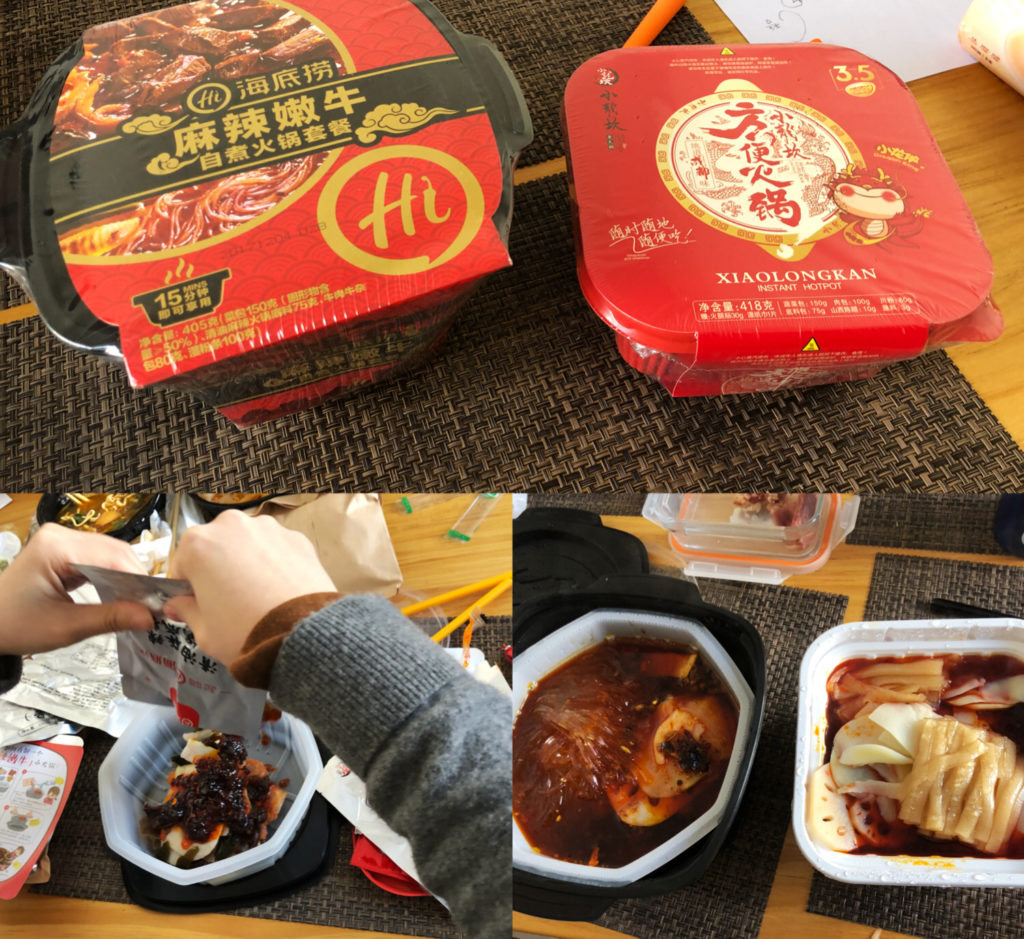
Instant hotpot: an invention that has gone viral on the Chinese Internet last year. We tried and...just didn't get it. No. No at all.
-
An hour later, Yan and I managed to demolish everything we’ve ordered: 3 plates of beef (including tripe and tongues), some shrimp balls, tofu, bean curd, potatoes, taros, vegetables and glass noodles. Taking a last bite of the lettuces which have absorbed all the flavors from other ingredients, we now feel full, happy, and reenergize from the inside out.
“You know what? Since we love hotpot this much, why don’t we write an article about it?”
“But we don’t have much analytical insights to offer on this topic…we just simple LOVE TO EAT IT!”
“Just write about our love for hotpot! To praise its rich history, fascinating cultural embedment and deliciousness, and most importantly, to encourage everyone to try more hotpot! Hotpot deserves more attention in the Chinese food space!”
For those of you that are currently surviving cold weather like us in Beijing, please, give hotpot a chance. Let it warm your stomach, sooth your soul and fuel up your battle against the cruel winter chill. For those of you that are living in the warmer side of the planet (*envious stare*), give hotpot some love too – after all, what other food is as good at uniting people and making everyone happy as a damn good hotpot?
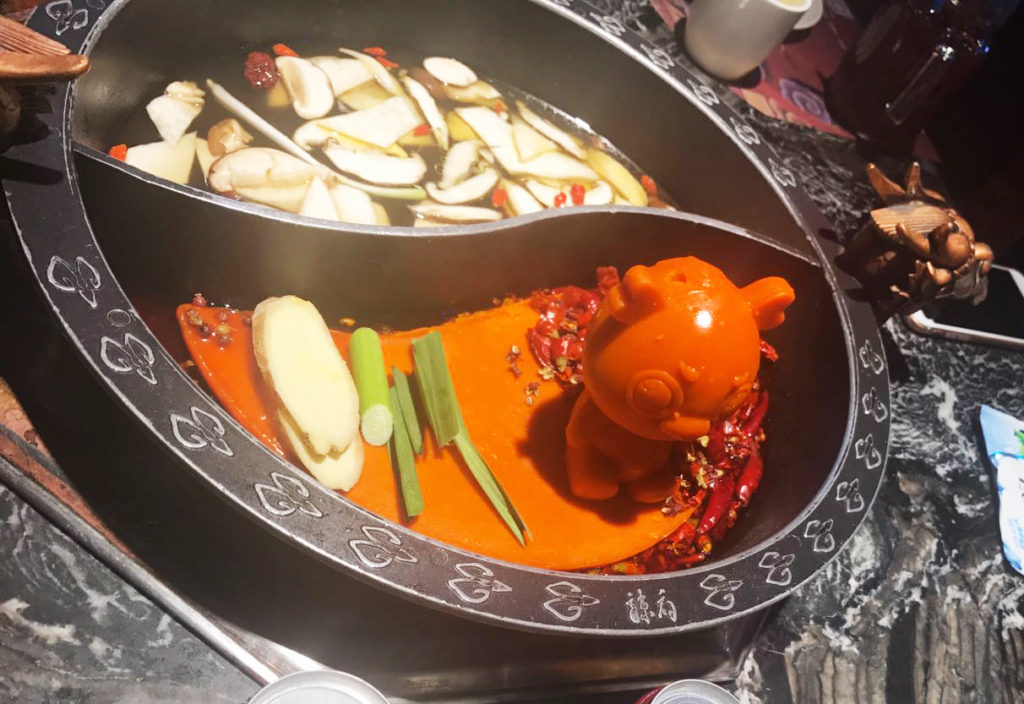
Our discovery in a Beijing restaurant: that orange bear (?) is made by a whole chuck of cow fat - once the fire is on, it melts into the broth and...just make everything irresistible (and every bite guilty as heck...).
![]()
To wrap up this week's story, Yan and I want to recommend you a few of our favorite hotpot restaurants in Beijing (do bear in mind though we are not professional foodies, and these are just what we like personally):
In random order:
(click the restaurant name to go to its Dianping page with all the info )
- 滇草香云南原生态汤火锅:
Fantastic, affordable chain (always have discounts) of Yunnan mushroom hotpot.
- 捞王锅物料理:
Famous Guangdong pig-stomach and chicken hotpot restaurant. Super popular & normally have a long line during meal hours.
- 满恒记火锅:
Solid Mongolian hotpot. The atmosphere is super "old-beijing style 老北京"in a good way.
- 福合埕潮汕牛肉火锅:
One of the more popular and authentic spot for Chaoshan beef hotpot.
We don't actually have Szechuan hotpot that often and if we do, this is where we go. (oh and this is where the cow-fat teddy bear is from...fyi)
Let us know what your favorite hotpot restaurants are, or just what type of hotpot you prefer in general. For the days we don't get to have hotpot, we'd love to cuddle with hotpot stories from other people 🙂
See you soon with our next story,
xxxx,
Biyi and Yan

潮汕牛肉锅咧。